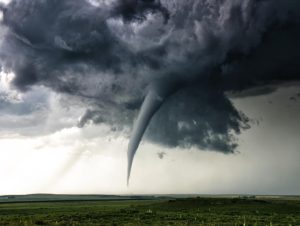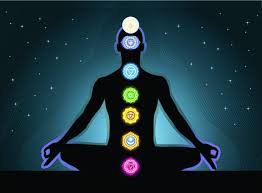
This week after nearly two months of uncertainty and fear, I felt eerily calm. Although there have been some loosening of the restrictions of lockdown, we are undeniably still a species in crisis with no solution yet to the ravages of this virus, yet I felt this slowing down of my frantic energy and for the first time in a long time I could focus and concentrate. Instead of hectically working, gardening, cooking or cleaning, I sat at my workbench and made a bracelet for a very dear friend whose birthday is very soon after mine. And this is another anomaly. I am usually not at my best around the time of my birthday, as those who know me will attest! For some reason I have always found the looming of this particular anniversary strangely depressing and prefer to gloss over my ‘special day’ with the minimum of fanfare. Historically I have used my birthday as an occasion to get my measuring stick out and berate myself for not having achieved more in the year that has passed. These days I am grateful to just still be here, a lesson learned from watching close friends of mine survive cancer. So there I sat at my workbench selecting and threading beads onto a wire and feeling…..centred.
Whenever I find myself in this head space I make an effort to enjoy it while it last, conscious as I am that far from being the end of my struggles it is likely that I am in “the eye of the storm.” I have always been morbidly fascinated by destructive weather and have never shaken the feeling that it is our planets way of showing us how inconsequential we really are in the big scheme of things. When you see footage of a tornado you witness everything we humans hold dear being extinguished in seconds. And yet somewhere in the centre of that destructive whirlwind is the eye of the storm, a place that is eerily calm. The eye of a storm is defined as
“….a region of mostly calm weather at the centre of a strong tropical cyclone. It is a roughly circular area, characterised by light winds and clear skies surrounded by a ring of towering thunderstorms where the most severe weather and highest winds occur. The cyclones lowest atmospheric pressure occurs in the eye and can be as much as 15 percent lower than the pressure outside the storm….”

I find this intriguing. Right in the centre of all of this potentially destructive power is a place of calm weather and low pressure. Exactly how I feel right now. In my own yoga practice over the last week or two I felt drawn to working on core strength, because I find that feeling strong on the inside affects how I feel and how I interact with the world in a positive way. I am just about to be 52, so it is more important than ever to incorporate elements of strength training into my yoga as we lose muscle mass as we age, and for women particularly the hormonal shifts of menopause affect the integrity of the pelvic floor
The term “core strength” gets bandied about a lot and I am not sure what people mean when they use this phrase or how it is interpreted. Often it is used to describe the elusive abdominal six-pack that so many people covet, or is shouted out by an instructor at one of those classes that have the words “Attack Combat or Pump” in the title. The core actually refers to more than thirty different muscles that work in harmony to stabilise and control the pelvis and spine. Core strength is less about power and more about the subtleties of being able to maintain good posture and ease of movement. Signs of good core strength are the ability to get on and off the floor with ease, stand up from a chair without using your arms, sit comfortably at a desk without back ache, and to partake in your daily activities whether that be walking the dog, sitting for hours at a jigsaw puzzle, hoovering the stairs or digging the garden without pain. Yoga contains many movements that REQUIRE core strength but arguably not enough that PROMOTE core strength which is why it makes sense for the teacher to add in some moves from other disciplines in the warm up to help people find and engage their core. It is worth pointing out that trying to “hold your tummy in” all day, sometimes because of restrictive waist bands, sometimes because we are not happy with the shape of our midriff, does NOT create core strength, in fact it weakens some of the very muscles we need to strengthen. “Holding” the belly also prevents you from breathing fully and deeply, and at a time when we are at risk of catching a respiratory virus this is a particularly bad idea. Every so often stop what you are doing and take five full deep breaths in AND out as the lungs benefit hugely from being inflated and deflated as fully as possible as regularly as possible.

On a more esoteric note, the core is connected to the flow of our energy or life-force known as prana. In yoga the idea is that we are sustained not only by the air we breathe and the water and food we take in, but by a vital force that flows through us via a complex system of channels that we can think of as being akin to the circulatory system that carries nutrients to the body and collects waste from the body. The vessels that circulate prana are called Nadis, and at certain points on their journey these streams of energy cross. (And every time I say that I think of the film Ghostbusters “Don’t cross the streams!” Do you remember?) Where two lines of energy cross a vortex is created, you can think of this as a tornado or whirlpool. These tornadoes of energy are called the Chakras and there are many of these in the subtle body. Luckily for us there are only seven main chakras -think of these as being arranged through your body in a vertical stack: pelvic floor, sacrum, navel, heart, throat, centre of the eyebrows and crown of the head.
The core relates to the first three of these chakras
Muladhara (pronounced MOO-la DHA-ra) which we can visualise at the centre of the pelvic floor
Swadisthana (pronounced SVA-dis-THAN-a) which we can visualise at the sacrum
Manipura (pronounced MAN-ee-POO-ra) which we can think of as behind the navel.
Now what I find especially intriguing is that these three chakras are also associated with the elements earth, water and fire.
Muladhara is associated with Earth – the element of stability and nurture. It enables us to channel energy up from the earth through the feet and legs and into the spine and also acts as an ‘earth’ for negative energies, helping us to discharge toxic emotions back down through the feet and into the ground. It represents our physical and emotional grounding.
Swadistana is associated with Water – the element of adaptability. It allows us to create connection as well as cooling and calming the mind, giving us respite from negative thoughts. It helps us maintain a broader perspective and the ability to go with the flow.
Manipura Chakra is associated with Fire – the element of change and transformation. It enables us to tap into our personal power so that we can navigate our lives with strength and determination.
When I read through that list I can see immediately that during the changes brought about by the pandemic there have been times when I have felt horribly ungrounded, unable to go with the flow, and out of touch with my usual steely determination. And this may explain my sudden need to do more core work, maybe it’s not just because working from home has given me way too many opportunities to visit the fridge and my favourite jeans have been folded up and put in the bottom drawer, but because I could sense that it would help me to cope better. And it seems to be working.
So back to this ‘eerie calm’. I have been working my way through the changes and what they mean to me, my family and the wider family of my fellow humans and our planet. And it has been heavy stuff. There are huge lessons to learn for us as a species here and even bigger ones if we don’t take heed now and make some sweeping and lasting changes to the way we interact with each other and our planet. In order to evolve we must journey towards the exact places that we tend to shy away from, the painful places, the raw places, the places where we feel most exposed and vulnerable. We must allow ourselves to pass through all kinds of turmoil, in order to discover that our consciousness, the very root of who we are is unaffected by the disturbance. We can then sit in the eye of the storm observing all the chaos around us but remain calm centred and stable. Well I can DEFINITELY say I have passed through all kinds of turmoil over the last two months as my other BEING HUMAN posts reveal, and now I seem to have blundered my way into the eye of the storm, and have found my place of ‘perfect rest’ where I am no longer pushed or pulled by anything. And I am going to make the most of every second of it. I will leave you with these words by Donna Farhi, an awesome yoga teacher
“It is in this tethering of awareness to the unchanging core of our being that true security can be gained. We find that the only thing that is unchanging in this core of ourselves is the radiantly alive and constantly vibrating pulse of life. When we arrive in this place, we realise there is no centre and no periphery, that we are in fact infinite and limitless.” (from “Bringing Yoga to Life” p.21)
(with heartfelt thanks to LHW for teaching me to move through turmoil and to JJ for the much needed hug)

I needed that – thank you hon
Glad to hear that you’re feeling more settled xx